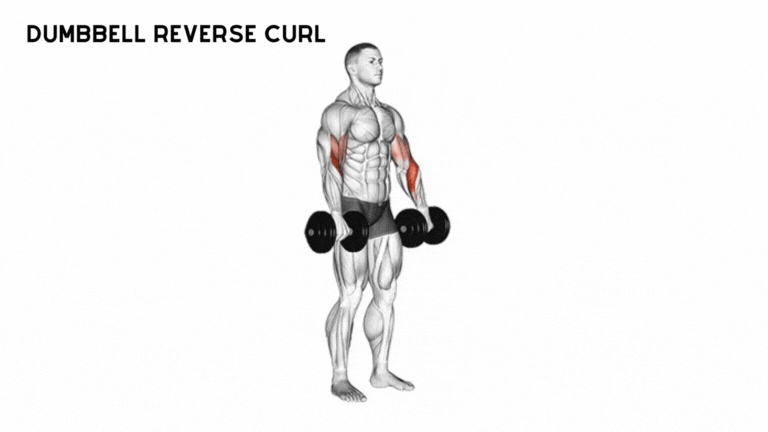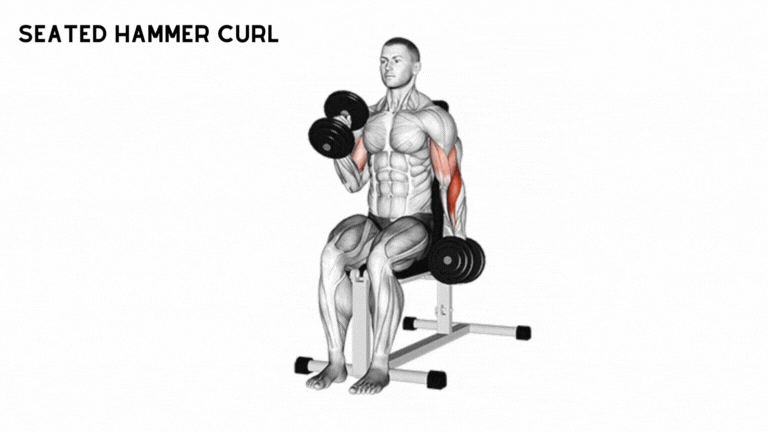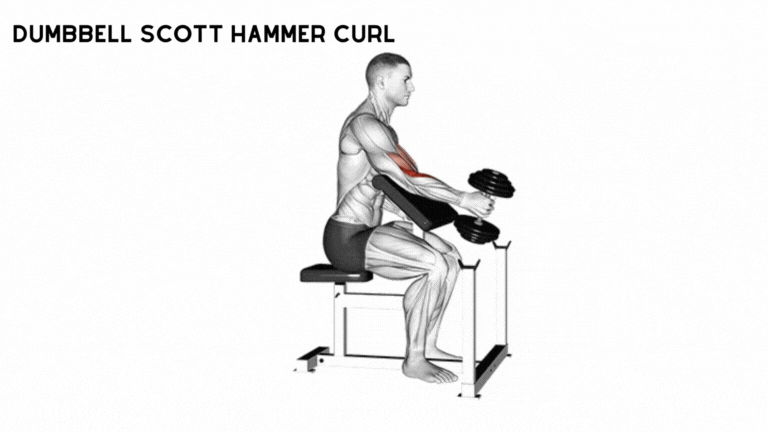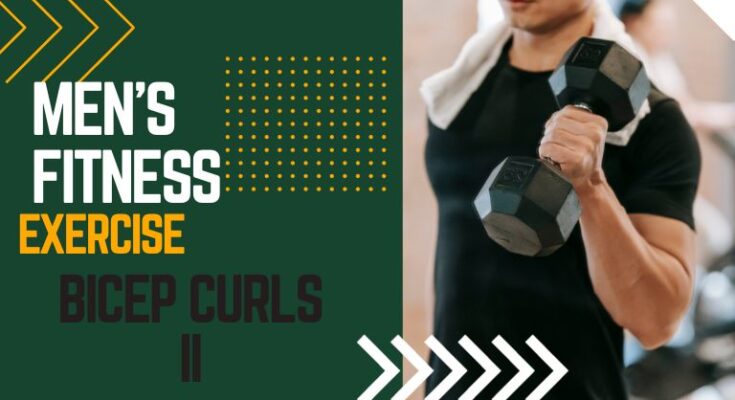ZOTTMAN CURL
The Zottman curl is a versatile dumbbell exercise that targets multiple muscles in the arms, including the biceps and forearms. Named after legendary strongman George Zottman, this curl variation adds an extra challenge by incorporating both a wrist supination and pronation movement during the exercise.
To perform the Zottman curl, start with a dumbbell in each hand, palms facing forward. Begin the movement by curling the dumbbells up towards your shoulders, keeping your elbows close to your body. Once you reach the top of the curl, pause for a moment and then rotate your wrists so that your palms face downwards. Slowly lower the dumbbells back down to the starting position, with your palms now facing towards your body. This combination of movements recruits not only the biceps but also the brachioradialis and other muscles in the forearms, making it a highly effective exercise for overall arm development.
Incorporating the Zottman curl into your arm training routine can bring variety and a new challenge to your workouts. Not only does it target the biceps for aesthetic gains, but it also helps strengthen the forearms, which can improve grip strength and overall arm function. Whether your goal is to build muscle or enhance your athletic performance, the Zottman curl is a worthwhile addition to any training program.

How to do?
- Stand with your feet shoulder-width apart and hold a pair of dumbbells at your sides, palms facing inward.
- Curl the dumbbells up towards your shoulders, keeping your elbows close to your sides and rotating your palms to face upward (supination).
- At the top of the movement, hold the dumbbells in the supinated position for a second, then rotate your palms downward (pronation) and slowly lower the weights back down to the starting position.
- Repeat for your desired number of reps.
Benefits
The benefit of the dumbbell zottman curl is that the positive part of each rep is targeting the biceps and the negative part targeting the forearms (brachioradialis and brachialis muscles). By alternating between supination and pronation during the curl, the Zottman curl targets both the biceps and the forearms. It can help to improve grip strength, wrist mobility, and overall upper body strength. Here are some of the benefits of adding Zottman curls to your arm workout routine:
1- Improved bicep strength and size: The biceps brachii is one of the primary muscles targeted by Zottman curls. This muscle is responsible for flexing the elbow and supinating the forearm. By incorporating Zottman curls into your arm workout routine, you can increase the strength and size of your biceps.
2- Stronger and larger forearms: The brachioradialis muscle is another important muscle targeted by Zottman curls. This muscle is located in the forearm and is responsible for flexing the elbow. Strengthening the brachioradialis muscle can lead to a more defined and sculpted look in the arms. When the muscle is developed, it creates a more pronounced bulge on the outer part of the forearm, which can give the appearance of a larger arm. You can increase the size of your forearms by incorporating Zottman curls into your arm workout routine.
3- Enhanced brachialis development: The brachialis muscle is located deep in the arm and is responsible for elbow flexion. This muscle is often overlooked in traditional bicep curl exercises, but it is targeted more effectively with Zottman curls. By strengthening the brachialis, you can improve the appearance and strength of your arms.
4- Improved wrist strength: The alternating grip used in Zottman curls can help to strengthen the wrist muscles. This is important for athletes who need strong wrists for sports such as baseball, tennis, and rock climbing.
In conclusion, Zottman curls are a highly effective exercise that can help to build overall arm strength and size. By targeting multiple muscle groups at once, this exercise can help to improve bicep strength and size, forearm strength, brachialis development, wrist strength, and overall muscle activation. If you want to take your arm workout to the next level, consider adding Zottman curls to your routine.
DUMBBELL REVERSE CURL
The dumbbell reverse curl is a popular exercise that targets the muscles in the forearm and biceps. By holding the dumbbells with an overhand grip and curling them towards your shoulders, you engage the brachialis and brachioradialis muscles, which are often neglected in typical bicep exercises. This exercise not only strengthens these muscles, but also helps improve grip strength and overall arm definition.
To perform the dumbbell reverse curl, start by standing with a dumbbell in each hand, palms facing your thighs. Keep your elbows close to your body and fully extend your arms. In a controlled manner, curl the dumbbells upward, focusing on contracting your biceps and forearms. Make sure to keep your wrists straight throughout the movement to properly isolate the targeted muscles. Slowly lower the dumbbells back down to the starting position and repeat for the desired number of repetitions. For optimal results, it is recommended to start with lighter weights and gradually increase the resistance as your strength improves.

How to do?
To perform the exercise, follow these steps:
- Stand with your feet shoulder-width apart and hold a pair of dumbbells in front of your thighs, palms facing downward (pronated grip).
- Keep your elbows close to your sides and slowly lift the dumbbells towards your shoulders by flexing your elbows. Keep your wrists straight and your palms facing downwards throughout the movement.
- Pause at the top of the movement and squeeze your forearms and biceps for a second.
- Slowly lower the dumbbells back to the starting position by extending your elbows and maintaining control of the weight.
- Repeat for the desired number of repetitions.
Benefits
Dumbbell reverse curls are a great way to build forearm strength and size. They work the brachioradialis muscle, which is a key muscle involved in forearm flexion. Strengthening this muscle can improve your overall forearm strength and make it easier to perform daily activities like carrying bags, lifting weights, and using tools.
Dumbbell reverse curls are also a good way to balance your arm development. Many people focus solely on bicep curls to build bigger arms, but this can result in imbalances and an uneven appearance. Adding dumbbell reverse curls to your routine can help to target all of the muscles in your arms, including the brachioradialis, which can create a more balanced, symmetrical look.
Overall, dumbbell reverse curls are a valuable exercise for anyone who wants to build strong, well-developed forearms. They are also a good addition to any arm workout routine.
SEATED HAMMER CURL
The seated hammer curl is a highly effective exercise for targeting the biceps and forearms. To perform this exercise, start by sitting on a bench with your back straight and your feet firmly planted on the floor. Grab a pair of dumbbells with a neutral grip, palms facing each other. Keep your elbows close to your sides as you curl the dumbbells up towards your shoulders. Slowly lower them back down to the starting position and repeat for the desired number of reps.
The seated hammer curl not only helps to build strength and definition in the biceps, but it also engages the brachialis muscle in the forearm. This exercise provides a great alternative to the traditional dumbbell curl as the neutral grip places less stress on the wrists and elbows. Incorporating the seated hammer curl into your arm workout routine will help you develop well-rounded biceps and forearm muscles, ultimately improving your overall strength and aesthetics.

How to do?
Here are the steps to perform seated hammer curls with proper form:
- Sit on a bench or chair with your feet flat on the ground, and hold a dumbbell in each hand with a neutral (hammer) grip, palms facing each other.
- Keep your elbows close to your sides, and engage your core to maintain a stable position.
- Slowly lift the dumbbells towards your shoulders by flexing your elbows, keeping your wrists and forearms in a neutral position.
- Pause for a moment at the top of the movement, and then slowly lower the dumbbells back down to the starting position.
- Repeat for the desired number of repetitions, maintaining control and avoiding swinging the weights or using momentum.
Benefits
Seated hammer curls are a great exercise for building stronger, bigger arms, improving forearm and grip strength, and adding variety to your training routine. Here is a summary of the benefits in my own words:
- Increased arm size and strength: Seated hammer curls work the biceps, brachialis, and brachioradialis muscles of the upper arm. By lifting weight against the force of gravity, you can hypertrophy these muscles and increase your arm size and strength.
- Improved forearm and grip strength: Seated hammer curls are performed with a neutral grip, which means that your palms are facing each other. This grip requires greater activation of the forearm muscles, which can lead to improved forearm and grip strength.
- Variety in training: Seated hammer curls are a variation from traditional bicep curls, which can help to break through plateaus in training. By adding seated hammer curls to your routine, you can provide a new challenge for your muscles and continue to see progress and gains.
- Improved overall aesthetics: Strong and toned arms are a desired aesthetic for many people. Seated hammer curls can help to develop the muscles of the upper arm, leading to a more defined and toned appearance.
Overall, seated hammer curls are a valuable exercise for anyone who wants to improve their upper body strength, forearm and grip strength, and overall physique.
DUMBBELL SCOTT HAMMER CURL
The Dumbbell Scott Hammer Curl is a popular variation of the traditional hammer curl exercise. This exercise targets the biceps brachii and brachialis muscles, helping to build strength and definition in the upper arms. To perform this exercise, start by sitting on a Scott bench with your chest pressed against the pad. Hold a pair of dumbbells with an overhand grip, keeping your palms facing inwards. Without moving your upper arms, slowly curl the dumbbells up towards your shoulders, squeezing your biceps at the top of the movement. Lower the dumbbells back down in a controlled manner and repeat for the desired number of reps.
One of the benefits of the Dumbbell Scott Hammer Curl is that it isolates the biceps brachii and brachialis muscles, allowing for greater muscle activation. This exercise also places less strain on the wrists compared to traditional curls, making it a suitable option for individuals with wrist issues. Additionally, the Scott bench provides support to the upper body, reducing the likelihood of cheating or swinging during the exercise. To maximize the effectiveness of the Dumbbell Scott Hammer Curl, focus on maintaining proper form and executing each repetition with controlled movements. Gradually increase the weight as your strength improves to continue challenging your muscles and promoting growth.

How to do?
- The exercise is performed by standing behind the preacher bench and placing the back of your arms on the bench pad. Holding the dumbbells with a neutral grip, palms facing each other, you will curl the weights up towards your shoulders while keeping your upper arms stationary.
- Squeeze your biceps at the top of the movement and then slowly lower the dumbbells back down to the starting position.
- Repeat for the desired number of reps and sets.
Benefits
The dumbbell Scott hammer curl is a great exercise for building strength and definition in the biceps, brachioradialis, and brachialis muscles. It is also a good variation for people who experience elbow pain during traditional bicep curls.
Here are some of the key benefits of the dumbbell Scott hammer curl:
- Increased muscle size and strength: The neutral grip used in the dumbbell Scott hammer curl places greater emphasis on the brachialis muscle, which is located underneath the biceps and helps to give the arm a thicker, more defined look.
- Improved forearm and grip strength: The dumbbell Scott hammer curl also works the forearm muscles, which can lead to improved forearm and grip strength. This can be beneficial for athletes and people who engage in activities that require strong grip strength, such as climbing, tennis, and golf.
- Reduced risk of injury: The dumbbell Scott hammer curl can help to reduce the stress on the elbow joint, which can be beneficial for people who experience elbow pain. Additionally, the use of dumbbells allows for a greater range of motion than barbells or machines, which can help to improve joint mobility and reduce the risk of injury.
The dumbbell Scott hammer curl is a valuable exercise for anyone looking to improve their upper body strength, forearm and grip strength, and overall physique. It is a safe and effective exercise that can be performed by people of all fitness levels.



